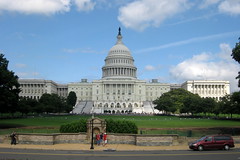The Millennial Trains Project, a traveling incubator designed by 26-year-old Georgetown University graduate, Patrick Dowd, is pioneering innovation through contemplation and collaboration via a symbolic train ride from San Francisco to Washington, DC, with 10 other stops along the journey. Dowd’s inspiration for this endeavor came as a result of observing the Occupy Wall Street movement while working in New York for JP Morgan when he questioned whether the dissatisfaction of so many young people could be channeled into something positive. Having participated in a similar train project involving young entrepreneurs while traveling as a Fulbright scholar in India (the Jagriti Yatra), Dowd decided to undertake a similar venture in the United States.

Credit: Unfoundation.org
In the spirit and mindset of a true Millennial, Dowd did not allow his lack of experience deter him from planning this project. As an innovator, he made the project about ” ‘vision and passion’ and daring to fail,” rather than being burdened by finances and “business plans.” He set a goal to find backers, railroad cars and innovative passengers willing to take the trip. Dowd first set out to find sponsors for his plan and was successful in getting the support of Betsy Broun, director of the Smithsonian American Art Museum. She then assisted him in networking and bringing other sponsors aboard, including the Norfolk Southern rail line. Dowd was able to locate two 1953 sleepers and a 1948 domed observation car. Also, he was able to secure the services of some chefs to prepare delicious meals for the passengers.
With the functional details in place, Dowd then went about selling his idea of a train ride across the country for young innovative entrepreneurs, offering a unique opportunity to connect with the landscape, each other and other businesses and entrepreneurs along the way. Using social media platforms, he garnered the attention of many interested people, and the individuals selected to go were the first ones who were able to pay for the trip, with many of them raising the funds through crowdsourcing on the Internet.
Of course the idea of a whistle-stop train crossing America carrying someone who wants to deliver a message or engage citizens is not novel. Perhaps the most famous whistle-stop tours were those used for the presidential campaigns of Presidents Franklin Delano Roosevelt and Harry Truman. With limited access to face-to-face contact because of transportation limitations in terms of traveling time and with lack of televisions in American homes, whistle-stop train tours were effective in maintaining personal contact with citizens. The unique idea in the Millennial Trains Project is that this whistle-stop train is “a campaign that is not trying to elect anyone,” but rather about “reimagining what we can do as a country over the next 10 years.”
As President Barack Obama stated in his speech celebrating the 50th Anniversary of the March on Washington, “change does not come from Washington, but to Washington.” The Millennial Trains Project is symbolic of the movement underway in which the Millennial Generation is quietly making a difference and bringing their ideas to Washington. This project also is founded on the recognition that this generation is not the group of slackers as they are often portrayed by former generations. Rather, with their extensive education, technology skills, networking abilities, willingness to compromise and innovative spirit, they are the pioneers of a new era that is focused on justice, social and economic equality, environmental protection, sustainability, improved living conditions for all people, and acknowledgement that happiness in life is important.
We here at LGBG will be following the three upcoming trips scheduled by the Millennial Trains Project, and we will keep our readers informed of any developments or opportunities to participate in this worthy project.
Source: Leiby, Richard (2013, September 10). Thinking Things Forward. Millennial Trains Project is an incubator powered by ideas. The Washington Post, pp. C1, C2.



